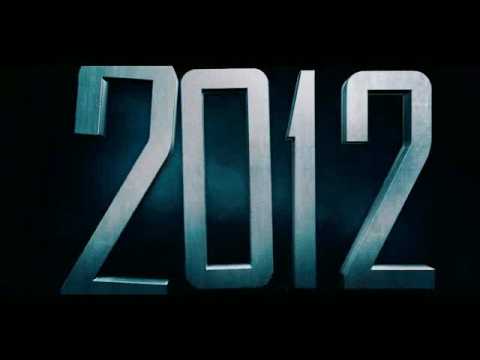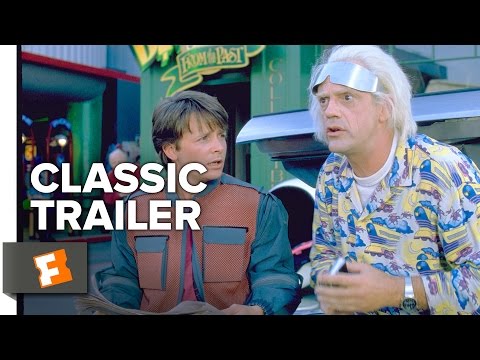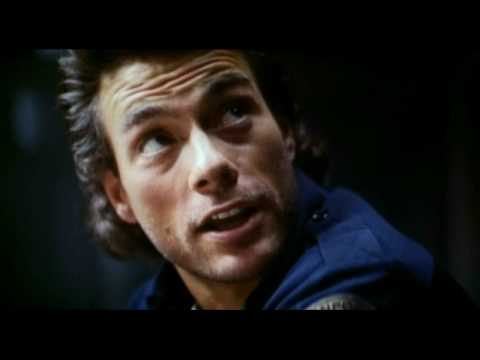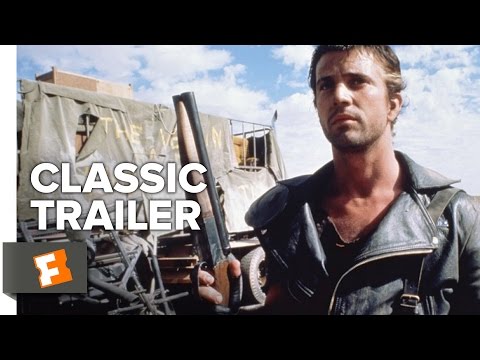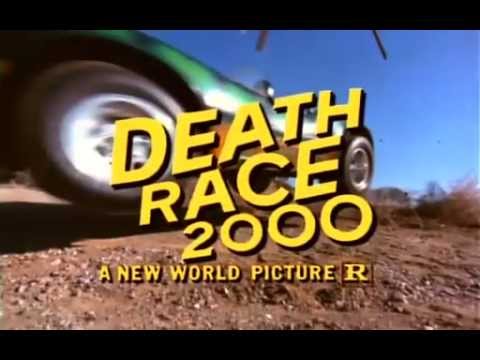10Blade Runner
Blade Runner is a beloved 80s sci-fi flick which is, technically, just about to be proven wrong. Starring Harrison Ford as Officer Rick Deckard, the film is the story of a police officer known as a Blade Runner whose job is to identify rogue “replicants” which are robots almost indistinguishable from humans. The movie is set in 2019,[1] so we are still a couple of years away, but we would likely all agree that flying cars, human-like robots, and off-world colonies are still years away. A sequel has recently been announced and is set 30 years later, making some of these things more possible. However, it is still hard to imagine them being as normal as they are portrayed in the original film, even 30 years from now. Only time will tell if we are in a more Blade Runner appropriate society by 2049.
92001: A Space Odyssey
2001: A Space Odyssey is widely regarded as one of the greatest science fiction films of all time. And it actually did accurately portray many pieces of technology that were futuristic at the time but would come into existence later. The reason this film made this list is the extent of the space travel for the timeline. We have yet to send humans to Mars, let alone Jupiter, and we for sure did not have computers as advanced as HAL 9000 back in 2001. Watch this video on YouTube Stanley Kubrick and the crew did extensive research on the latest space technology, as the film was being produced at the same time NASA was racing to space,[2] and this led to great realism in the technical detail of the film. It also led to Kubrick and the crew needing to outpace the real-world scientists to make the futurism seem more valid. This meant some very interesting technology went into the film that echoes both current and past technology. For example, there is a briefcase with a phone which may trigger similarities with laptops and current phones. However, these were not around in 2001. So, 2001 was a mixed bag of some things that were far more advanced than what we have, and others that are now old ideas. They got the future wrong with their timeline, but they were definitely on the right track.
82012
This movie, released in 2009,[3] played off the ancient Mayan prediction that the world would end in 2012, according to their calendar. If you are reading this now, in 2017, we can agree that this prediction did not come to pass, thankfully. But in the movie, there is extreme destruction as a result of the earth’s core heating up and leading to dramatic shifts in the climate, springing earthquakes, plate shifts, tsunamis, and the super volcano under Yellowstone erupting. Some of these events could happen separately in some manner, at some point in time, but they are unlikely to do so in the near future on the scale portrayed in the movie. In fact, all of the speculation surrounding the year 2012 and its world-ending implications, was completely thrown out by NASA the day after the supposed ending of the world according to the Mayans. The Mayans did not actually predict the world would end on December 21, 2012, at all. The Mayan calendar’s long-count period ended that day, but another one started like any regular calendar would do. The original myth behind this world-ending event was that a mysterious planet discovered by Sumerians would crash into the Earth, bringing about cataclysm in May 2003. After that date had passed, the doomsday date was moved to 2012. This chain of events is different from the movie which blamed harsh solar activity for heating up the earth’s core. The film simply played off the fears of paranoid Internet users who read too much into those perpetuating the myth, and in real-life 2012, there was absolutely no threat to the planet.
7Back to the Future II
Back to the Future II took viewers to the future time of 2015, almost thirty years away from the then current year of 1989. In the movie’s version of 2015, there were hoverboards, self-lacing Nikes, flying cars, and other crazy tech that is non-existent today (though there are limited edition self-lacing Nike Air Mags that were created in homage to the film). It seems that Marty had a more accurate experience going backward than he did going forward. The movie showed its age with various references to current technology for the time being incorporated into the future technology portrayed in the film, such as mailboxes having fax machines, or fax machines just being relevant in homes at all. They did have video chatting which was one thing that was accurately predicted, though not usually done on large sized screens like in the film. We also do not have food rehydrators where we can put a little packet into a machine and get a full-on meal coming back out.[4] Even Spy Kids tried that years later and it was still silly.
6The Terminator
The Terminator series jumps around a fictional timeline, but it is said that the Terminator from the first film is sent from 2029.[5] A later installment, Terminator Salvation, pins the war against the advanced machines as being waged in 2018, but it was started long before. Following this timeline, we can know that Terminators and machines of that kind are definitely not in existence when the films say they would be. Artificial intelligence has long been a subject of debate over whether it is dangerous, or how impactful it can truly be, and in the Terminator series, it is surely at the worst end of the spectrum. This theme, reminding us of HAL’s murdering self-awareness, is something we as humans must be cautious about when making progress with artificial intelligence. We do not have any advanced A.I. as would be viewed in the Terminator series, but we are well on the way. The question is, will it be fully aware of its existence and will it lead to violence on us, its creators? Hopefully, the proof remains that this series was not right about the rise of machines.
5Timecop
Jean-Claude Van Damme stars in this action-packed film about a cop who regulates time travel.[6] Set in 2004, the film was proven wrong about time travel over ten years ago. Even now, the thought of being able to travel through time is heavily science fiction. The film also had very advanced self-driving cars which were not realistic then, but are becoming more accessible now. In the movie, the cars reacted to intricate voice commands. While we are not at that stage yet, voice command technology continuously grows more advanced, as do self-driving automobiles. Could the two eventually merge and lead to a fleet of cars in which you could simply speak where you want to go and you’ll be taken there?
4Rollerball
This film, set in 2018, made the odd prediction that a corporate-controlled society will feature a violent roller derby-esque game as the only form of entertainment.[7] While there is still one year for this to come about, the odds of this happening are slimmer than . . . well, just about anything. If anything, predicting that roller derby would be that popular was the biggest flaw. The more interesting part of this is that the world is controlled by corporations, rather than being made up of nations. A corporation is defined as an independent legal entity owned by shareholders, meaning that the corporation itself is legally liable for its actions and debts, not the shareholders. So having a world made up of corporations means that the world would be broken up into separate business-centered entities with everyone owning small pieces of whatever corporation they are a part of. It is an interesting idea, to say the least, and very different than our world of countries, but could it ever happen? Highly unlikely.
3Escape from New York
This movie, set in 1997, offered the idea that Manhattan would be one large maximum security prison.[8] That was rather outlandish, but they still made a sequel called Escape from LA and used a similar trope, saying that Los Angeles was now an autonomous island of criminals in the year 2013. It didn’t work the first time, and it didn’t prove true the second time either. The thought of a prison existing on that scale is just ridiculous, especially in a world center like New York City.
2Mad Max
The post-apocalyptic setting of the Mad Max movie series is hard to pin down time-wise, but in an interview with George Miller from 1984, it was determined that the events of the original films would occur between the late 90s and 2018.[9] This is yet another example of a different picture of the world than what has come to pass. In the movie series, between the first two films, the world has become a desolate wasteland ruled by gangs with supplies being rare for scavengers. It is unclear what brought about this apocalypse, but it had something to do with nuclear fallout and climate shifts. While we are not near to this type of world yet, it does not mean that the earth couldn’t suffer a similar fate to the one portrayed as the wasteland in the Mad Max series.
1Deathrace 2000
Similar to Rollerball in that the world focuses on a deadly sport for no good reason, Deathrace 2000 was released in 1975 and portrayed a society in which one of the only forms of entertainment was a violent long-distance car race in the year 2000.[10] This was to help control overpopulation, and the drivers gained points by running over innocent pedestrians in horrible ways. We’ll stick to boring old NASCAR for now (left turn!). Overpopulation is a growing concern, but it was nothing to be worried about 17 years ago. As the conditions we live in become safer and more comfortable with the advancement of technology, the death rate decreases, life expectancies rise, and the world grows more crowded. It is an issue to keep an eye on, but not one that would trigger the need for trans-continental road rage. Spencer Cowley is a college student who’s exploring the world of writing. He is a contributing editor for The Odyssey Online, and you can read his articles here.


